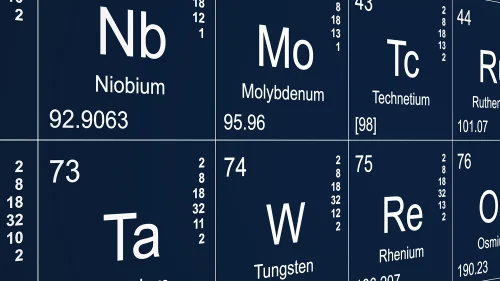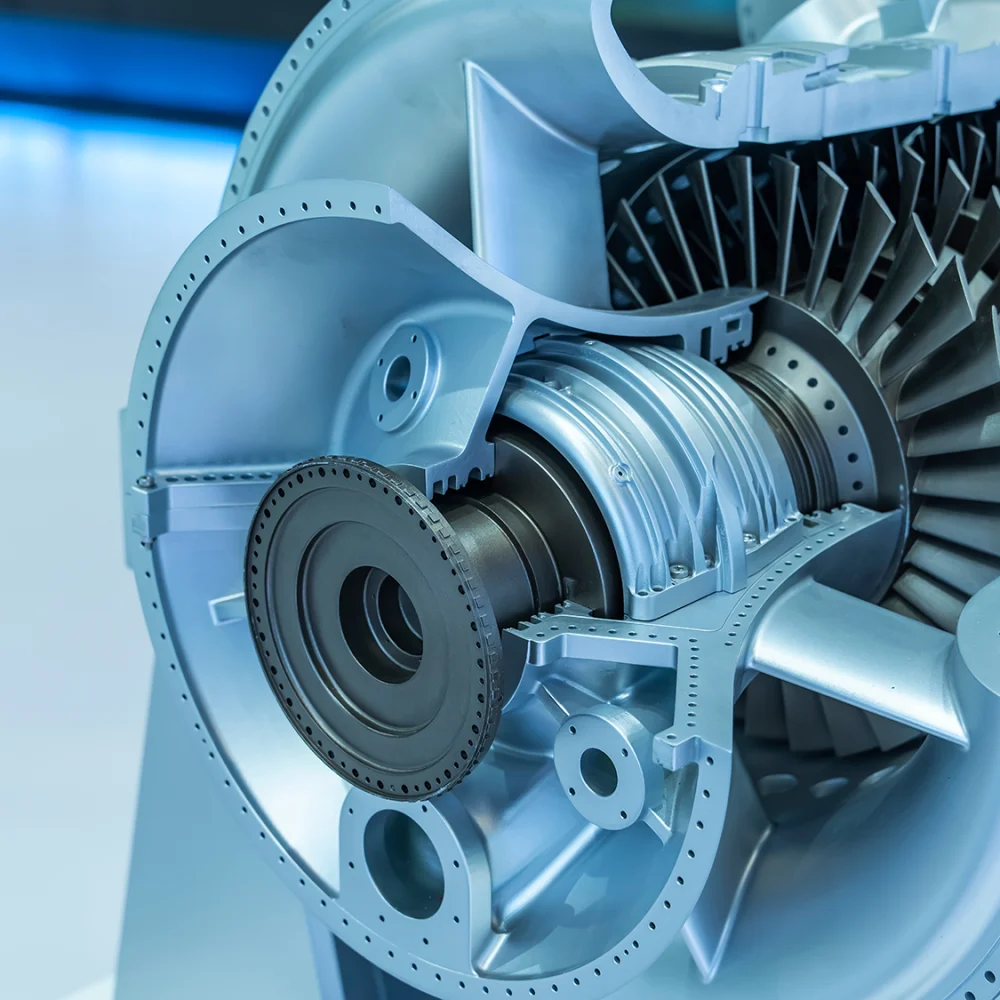Applications for Refractory Alloys
Calculate the following based on your actual alloy chemistry:
Application Examples
Predicting Potential BCC/B2 Superlattice for a Refractory Alloy
Refractory multi-principal element alloys have a big potential to be used as the next-generation high-temperature alloys. One such example of this is the 35Nb35Mo15Ru15Ti (at%) system, wherein the B2 strengthening phase could be precipitated by a heat treatment procedure in the BCC matrix. Based on a recent work from Kube et al. [1], a one-axis equilibrium diagram was created, which shows the stability region of BCC (BCC_B2 DISORD) and B2 (BCC_B2#2 ORD) phases respectively for this alloy (top plot). The High Entropy Alloys Database TCHEA7 was used for the calculation. It agrees well with their experimental observations, which show that solutioning at 1750 ℃ was insufficient to solutionise the B2 phase completely, as the solvus temperature is 1758 ℃.
After successfully solutioning the alloy at 1900 ℃, the B2 phase was precipitated in the BCC matrix at 1300 ℃ for 200 hours and 1600 ℃ for 40 hours. To recreate this, we used the Precipitation Module (TC-PRISMA) in Thermo-Calc to simulate the precipitate mean radius varying with time and compared to the experimental results, which show reasonable agreement (bottom plot). The High Entropy Alloys Databases TCHEA7 and MOBHEA3 were used for this simulation. The general growth model was applied with a mobility pre-factor of 5 (to account for quenched-in vacancies post solution heat treatment) and spherical morphology (as observed in experimental results) of precipitates was taken for this calculation.

High-temperature Oxidation Resistance in BCC-based Refractory Alloy
Several refractory alloys (Mo, Nb, Ta, and W based) are suitable to use in ultra-high-temperature applications, but only in a protective atmosphere. This is due to severe oxidation, known as pesting, which occurs at temperatures above 500 ℃ in air. However, Si, B additions to such alloys (one example being Mo-9Si-8B (at%)) make it possible to create oxidation resistance at temperatures greater than 1000 ℃, as demonstrated by Heilmaier et al. [2].
In the plots shown, two temperatures are considered for oxidation resistance: 700 ℃ (top) and 1100 ℃ (bottom). At the lower temperature (top), it is seen that primarily MoO3 is formed together with QUARTZ (SiO2) and B2O3 phases. MoO3 is known to be volatile [2] and leads to a high weight loss rate. However, at the higher temperature (bottom), MoO3 is not formed and rather TRIDYMITE (high temperature SiO2) and B2O3 phases are observed, which are expected to protect the material from further oxidation. This agrees well with the experimental observations in [2]. The Molybdenum-based Alloys Database TCMO1 and Metal Oxide Solutions Database TCOX14 are used together for this calculation.

Calculation of the Primary Solidification Phases in Mo-Si-B Systems
Mo-Si-B is a promising system wherein the competition between BCC-Mo (which provides a ductile matrix) and Mo3Si-Mo5SiB2 (which enhances oxidation resistance) creates alloys with high temperature properties [3], including excellent resistance to oxidation at high temperatures (shown in the previous example).
The first plot (top) is a ternary phase diagram of Mo-Si-B at 1600 ℃ showing the region where these three phases exist in equilibrium. The second figure (bottom) shows the liquidus projection for the same alloy system, showing excellent agreement with experimental data regarding the primary solidification phases for different alloying contents [4]. Both calculations were made with the Molybdenum-based Alloys Database TCMO1.

Solidification of Refractory Alloys
Nb-based Nb-Si composites are promising due to their low density, high melting point and superior high temperature properties. In this example we have simulated the solidification for Nb-24Ti-18Si-5Al-5Cr-2Mo-5Hf (at%) [5] using the Scheil Calculator.
It can be seen that this alloy solidifies mainly as pure BCC-Nb, referred to as BCC_B2 in the plot, and Nb5Si3 phases, together with the formation of M5Si3 (Nb5Si3) and C14_LAVES (Laves) phases. This is in good agreement with experimental data [5], which was acquired using X-ray diffraction and electron microscopy. The Scheil simulations were conducted using the Niobium-based Alloys Database TCNB1.


Databases for Refractory Alloys
Thermo-Calc Software offers two databases that were developed specifically to be used for refractory alloys (Mo, Nb) as well as two databases that are generally useful for refractory alloys (HEA, Ni):
- Molybdenum-based Alloys Database
- Niobium-based Alloys Database
- High Entropy Alloys Database
- Nickel-based Superalloys Database (similar to TCHEA, contains oxygen)
We also offer a database that is useful for refractory oxides:
We invite you to speak to one of our sales representatives to discuss which database is best for you.
Learn more about Applications to Refractory Alloys
High-throughput CALPHAD calculations for screening and machine learning of refractory complex concentrated alloys
High-Throughput Exploration of Refractory Superalloys with Experimental Verification
Metallic materials for structural applications beyond nickel-based superalloys







